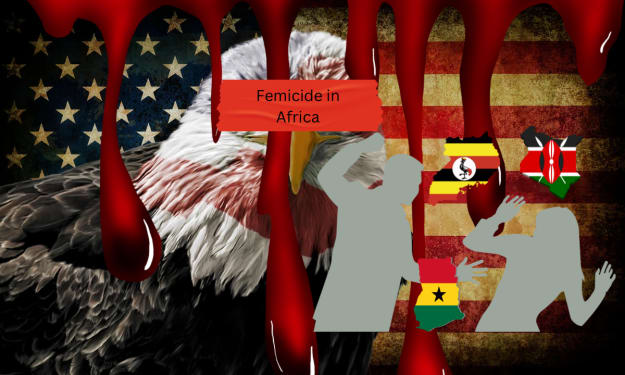The Pliable Nature of Social Media: A Gateway or a Barrier?
In an era where the vast majority of the global population has equal access to the internet and social media, we are faced with the burden of how to use it; a decision that affects both the production and consumption of information at an international scale.

Social media is one of today's most powerful tools. And although some people embrace the emergence of this tool by actively participating in different platforms, the ones who choose to cautiously observe it from a distance are onto something as well.
Whatever the scenario, the fact remains the same: we choose how to shape social media usage. What makes social media so significant today is its inherent connection to information. According to a Pew Research Centre study on the use of social media platforms in 2017, there has been a five percent increase in the amount of American adults who access social media to get part of their news. Social media access is even more prevalent among the youth. Even though most teenagers and young adults still browse other mediums to get informed, studies consistently show that social media is their main source for news.

But social media is not merely a space for news consumption, it's also a factory of news production (fake and real). Every news organisation, regardless of the size, continuously posts breaking news through social platforms such as Twitter. The power of social media is not limited to major news channels, however, it is within the reach of any citizen who owns some kind of digital device. By using only a smartphone, ordinary citizens have the capacity to report and share their local stories with the rest of the world. Journalism ceased to be exclusive. This is what happened in Syria.
In the midst of Bashar Al Assad's interminable dictatorship, and with all of their civic resources being restrained, the Syrians had no other choice but to consume the "patriotic" biased news they were presented with. The antidote for this media censorship was close to come, despite it not being recognisable to Syrian citizens at the time. Along with the 2011 civil uprising, came the liberation of media, and at the front of the resistance stands a man called Ghassan Aboud.
Ghassan Aboud is the founder of Orient TV, the first private Syrian news channel to actively engage with and train regular citizens on news reporting. The classroom? Social media. In the hopes of increasing their staff, and finding more direct sources, Orient TV producers set off to find witnesses. Once the witnesses were identified, the producers began their training process by communicating with them through Skype calls and giving them tips on how to report properly. Ultimately, what started as a training of a few activists amounted to the creation of a network of citizen journalists, on the ground and ready to report when needed.
The training proved effective, with the citizens' reports reaching a global audience in the form of pictures, videos, and live tweets. Thus is the effect of social media on international news; not only was it the medium for production, but also the channel through which foreigners accessed this news. I'm from Ecuador, I lived 12,574 km away from Syria at the moment the war broke out, and I had the capacity to be informed by the minute if I wanted to. The magic of social media is that it works as an informative gateway.
Thinking this sounds too good to be true? Well, it is. Social media may be a gateway, but that doesn't mean this gateway will not be obstructed by barriers, and this is what we need to watch out for, because the minute we let the barriers form, misinformation follows. These barriers come in the form of audience and source fragmentation. Soon after the success of Orient TV skyrocketed, other government-opposed stations began to build their own digital networks as well. Within time, new media coverage began to target niche audiences within the country. This is true for media consumers as well, in Syria and everywhere else. The simplest example is who we follow on Twitter. A digital news report by the University of Oxford discussed how citizens tend to follow the politicians they agree with while shunning those they oppose.

If we always seek for information we like and know about, is it really news? How can we get to constructive solutions beneficial to everybody if there are multiple truths? We need to keep our news sources diverse, and acknowledge that information should be received by everyone in the same way.
Works cited:
- Dickinson, Elizabeth. “Syria's Media War.” Columbia Journalism Review, 24 Nov. 2015, www.cjr.org/analysis/syria_media_war.php.
- Shearer, Elisa, and Jeffrey Gottfried. “News Use Across Social Media Platforms 2017.” Pew Research Center's Journalism Project, 7 Sept. 2017, www.journalism.org/2017/09/07/news-use-across-social-media-platforms-2017/.
- Newman, Nic, et al. “Overview and Key Findings of the 2017 Report.” Digital News Report, 2017, www.digitalnewsreport.org/survey/2017/overview-key-findings-2017/.
- “ Frontline Insight: Syria's Citizen Journalists.” Thomson Reuters Foundation, 17 June 2016, www.youtube.com/watch?v=qxipsGdvhzs.
- http://www.kata-illustration.com/ (cover image)
About the Creator
Maria Paula Serrano
This messy mind of mine finds a release in words.
Thanks for reading.
- 22-year-old Ecuadorian living in Vancouver, Canada






Comments
There are no comments for this story
Be the first to respond and start the conversation.